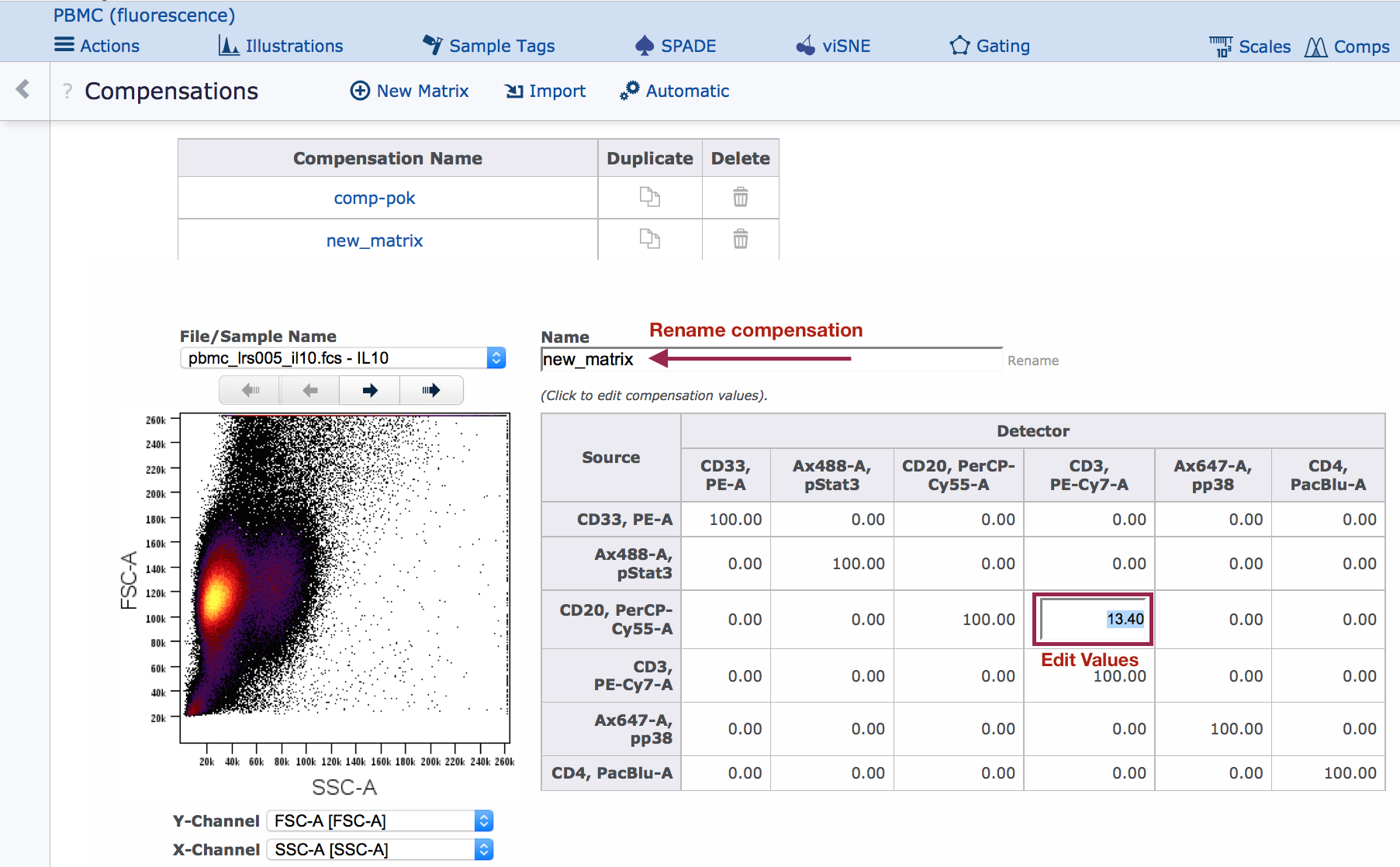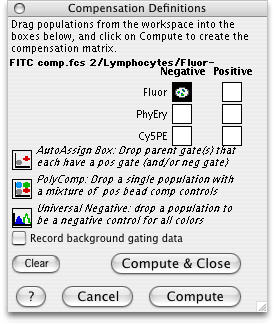

- #Flowjo compensation matrix import how to#
- #Flowjo compensation matrix import software#
- #Flowjo compensation matrix import plus#
#Flowjo compensation matrix import plus#
Click the plus (+) sign in the matrix list andģ. Double click on the little white box (empty matrix) next to a file in the workspace:Ģ.
#Flowjo compensation matrix import how to#
Ok, ok… time to get off the soap box and show you how to do it (even though you shouldn’t).ġ. Remember, there is a saying in the flow community that, “There are the biggest lies of lies and then there is flow cytometry!” Lets not propagate that any more! Creating your own matrix is dangerous and subjective. Yes, but you shouldn’t! Compensation is only as accurate as your single stain controls. We could try and explain this here, but the post on the New England Cytometry blog does a great job summing it up!Ĭan I create an empty matrix to type in my own values? What if my compensation value is over 100%? If the autofluorescence of your positive is 10 fluorescent units and the autofluorescence of your negative is 10 fluorescent units, then when you subtract the negative from the positive, autofluorescence is now 0. In fact, that is what we want! We don’t want autofluorescence as any part of our compensation calculation, as it will negatively affect the precision of the calculation. Since you are calculating the DIFFERENCE in fluorescence between the positive and negative, if they have the same autofluorescence, then autofluorescence becomes 0. The medium used for compensation is irrelevant as long as the positive and negative control for any given parameter have the same autofluorescence.
#Flowjo compensation matrix import software#
If your sample stains brighter than your control, the software cannot accurately calculate the amount of secondary fluorescence and will overcompensate or under compensate the data.įor more information, see the controls section of this document.Ĭan I use compensation particles to compensate cells? Probably around 90% of compensation issues actually arise due to the use of insufficiently bright controls.

Whether the primary fluorescence is 10,000 or 100, using the percent spillover, the software accurately calculates the amount of secondary fluorescence. Remember, the spillover value is a percent. Therefore, any fluorescence that falls within that range is compensated correctly. The equation calculates the ratio of the DIFFERENCE in the secondary fluorescence over the DIFFERENCE in primary fluorescence (essentially, a slope). In fact, the brighter, the better! Compensation controls allow the software to calculate how much spillover fluorescence occurs from that level of primary fluorescence. The matrix will be applied to the group assuming all parameters are the same.Can my compensation control be too bright? This matrix file can also be dragged to the group. Notice the sample A1 above now has a different color badge from the matrix we dragged on it. xml matrix file from your file system onto a sample in FJ to compensate that sample: You can apply a matrix stored on your file system to samples in your workspace assuming they have all the parameters listed in the matrix itself.

The names must match exactly best practice is to use the names that appear in the $PnN keywords of the FCS file. Parameters/channels that are not in this list have not been compensated parameters/channels in this list that are not in the sample are ignored. The file contains the title of the compensation matrix, the names of the parameters/channels used in the matrix and the coefficients of the compensated parameters. The saved matrix file is written in standard XML and is based on standards developed by the Data Standards Task Force (DSTF) of the International Society for the Advancement of Cytometry (ISAC). FlowJo uses XML to express these matrices.Įxample matrix file, viewed in Mozilla Firefox browser. Once in the Matrix Editor, you can use the File -> Save Matrix command to export it. The matrix editor is easily accessed by double-clicking a sample’s compensation badge (the icon looks like a tic-tac-toe grid): To save a matrix to its own stand-alone file, use the Matrix Editor. Whether compensation comes from your data as Acquisition-Defined, or is generated via FlowJo’s compensation wizard, the resulting matrix of values will be stored in XML in the FlowJo workspace document.


 0 kommentar(er)
0 kommentar(er)
